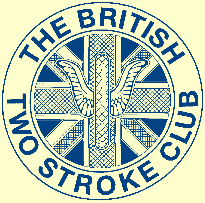 Go
to the Archive index
Go
to the Archive index
To me as a boy of 13 years in 1943, it was natural to have as a hobby, the making of model aircraft. Not the 1/72 scale for recognition purposes of enemy aid allied planes, but flying models. The first was made of cardboard strip stuck around the basic sections of wing and body, and then all covered with Jeyes toilet tissue stuck down with flour paste. The glider could just about glide. Progress was made through models cut out from sheet balsa wood, built-up gliders, and then to rubber-powered aircraft that could stay up for aore than a minute.
After the war was over, men with machining skills turned to the making of miniature two-stroke aero-engines. The signifloant European development was the invention and manufacture of the compression-ignitian engine. The word "Diesel" was avoided because that system implies that a cylinder full of plain air is rapidly compressed to a ratio of about 22:1 to heat it, and then the requisite qunntity or gas-oil be spray-injected for spontaneous combustion.
The Cl engine included a proportion of an ether mixed with the fuel (paraffin) and lubricating oil. As ether is very volatile giving a rapid produotion of vapour, and is unstable so that sudden compression/heating knocks out a single oxygen atom in the middle of a double heavy "dumbell" molecule. This destruction rapidly gives out heat, spreading the breakdown, and igniting the fuel part of the charge.
That is the first firing. If there is the right fuel mixture in the diminutive crankcase, and the simple spray-bar carburettor is set right, aid the variable ratio compression is set right, then you are lucky - the engine will continue to run. Such engines were commonly from 0.5cc to 5.0cc. I stili have my ED 2.46 Racer, circa 1947 which is in excellent working order.
The Americans developed their two-stroke petrol engines. These were generally bigger, being 0.60 cubic inch capacity, and known as '60' size motors. This is 10cc. Such engines were run with doped fuels to enhance the power output. Ezplosives such as nitro-methane and -propane were used to obtain outputs that created a whole series of new speed records for model aircraft. The big name of the day was McCoy 60. Improved design in later engines called Bungay and Ball, permitted outputs of 1.2hp at 12,000rpm from 10cc with less-specialised fuels!
Now we had at this time, an arrangment with aero-modellers in Hong Kong. They wanted English CI engines, and we wanted the McCoys, etc. So several gift exchanges were made. I got my 10cc petrol engine. After the realisation that my engine was outclassed by better makes, aid it hadn't a hope for a control-line speed record, and that it was too big for a reasonable free flight aircraft, there me a wondrous thought. It was powerful enough to drive my bicycle!
A wooden wheel on the engine shaft was pressured by a pair of other wheels, on to the rear tyre. It worked. I rode many miles around Weston-Super-Mare, without knowing that it was necessary for such things as test, tax and insuranoe. I did know that this form of transport is very, very pleasant. Motor cycling was safe in 1947, as there was very little motor traffic at all.
Time passed, 1948 RAF. 1949-51 college. In 1952 the wide world, and behold there were suddenly for sale, various outboard engines for fitting to your bicycle. Names recalled are Mini-Motor, Power Pak, Cucciolo (a unique 4-stroke with pull-rods, for fitting at the bottom bracket) were all 50ccc, and the 25cc and 32cc Cyclemaster engines, which latter engines came neatly fitted into a replacement wheel.
I got the Power Pak, passed the test, got a job, and six weeks later got sent on contract design to London. From Weston to London by Power Pak was 140 miles even in those dsys. Quite an eventful journey, which makes a story in itself. The reason was that in the dark near Reading I rode into an unlighted roadworks - a hole. Berkshire County Council ended up paying all repairs, my hotel bill, and loss of earnings.
In April 1953, I fell in love. The new MkII Ariel Square Four, in glorious Wedgewood blue was in Acton. I had to possess it. My friends helped me out with the deposit, and within 14 days, she was mine. It was about this time that some busy-bodies started to niggle about "people who passed the test on 50s, aid then rode 1,000s". I had that magnificent machine for just over 40,000 miles.
Just about ten years ago, I came back to motor cycling, and to the first love: two-strokes. 'Twas just like I'd never been away. For several years I made and still retain many friends through the RAC/ACU Training Scheme. My two sons both learned to love the joy of riding, and have had many more machines than me. My younger son soon displayed qualities that truly made him the most skilful rider I've known. Despite that, he came to grief without the involvement of others. His joy with bikes was such that if time could be re-run, neither his Mother nor me would alter the good times we all had, just because of accident.
So soon as this snow and ice disappears, my faithful and reliable ETZ will be making tracks again. Many pleasures pass with time, but riding a bike is an ever-enduring joy that never ceases. Just a few years ago, I rode 85 miles on a Honda PC50 (at a mere 20mph) enjoying the beautiful Spring day.
I'm glad I made that cardboard-and-toilet-paper glider.
This article was first published in the June/July 1986 edition of The Independent, the magazine of the British Two-Stroke Club.